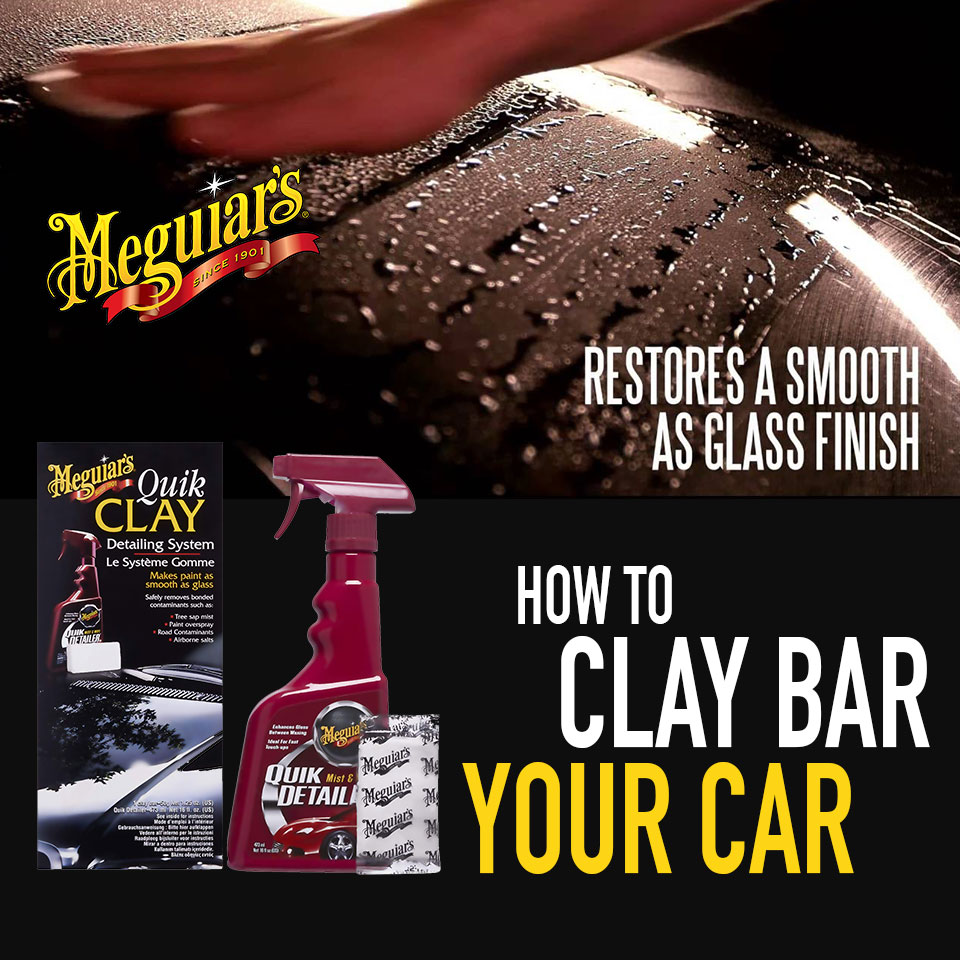Driving your car during different seasons and through various conditions can cause all sorts of problems for its paintwork. From salt and dirt ruining the uniformity of the colour, to paint fading from the sun, it’s crucial to keep your vehicle’s paintwork in tip-top condition. The best way to preserve it is by using a clay bar.
Clay bars work by gliding over panels and glass, removing any contaminates without causing a single scratch. In this guide, our experts explain how to use a clay bar on your car and the benefits they provide.
If you realise your car paintwork needs treating, we sell an extensive selection of clay bars and clay lubricants, alongside other detailing products, that’ll get your car looking as good as new.
What Is a Clay Bar and What Do They Do?
A clay bar looks and feels like children’s plasticine, but it’s actually a compound that’s made of resin, from either natural or synthetic materials. What clay bars do is lift and remove contamination from the surface of a car’s paintwork.
While washing a car removes surface dirt and grime, clay bars go deeper and remove deep set dust, tree sap, along with other contaminants that lie on car paintwork and windows.
Equipment You’ll Need
Here’s all the things you need to successfully clay bar your vehicle:
- Clay lubricant
- Clay bar
- Microfibre cloth
- Dry hand cloth
How To Use a Clay Bar
The process can be broken down into a few simple steps:
1. Wash your car
The first thing you need to do is wash your car and wait at least two to five hours for it to dry. This is so the surface is ready to receive a clay bar treatment and allows the clay lubricant to be applied effectively in step two.
2. Spray clay lubricant onto your car
The next stage of the process is to spray clay lubricant onto the area of your car you want to clay bar. Make sure to only spray a small amount of lubricant onto the body work and concentrate on a small, specific area of your paintwork at a time; this will help you get the best results.
3. Start rubbing with your clay bar
Using your clay bar, gently rub over the lubricant to remove the contaminants on the paintwork. Continue doing this until you can feel the bar is gliding smoothly across the area, and the surface it’s being rubbed over no longer feels rough.
4. Move onto the next area
Repeat steps two and three on each area of the car until it’s smooth all over. Remember to continuously spray each area with lubricant and mould the clay bar as you go along. The trick is to keep the clay bar damp by applying the lubricant whenever it begins to dry up. Also, don’t forget to clay bar your windows too.
5. Wipe down the panels with a microfibre cloth
Next, spray clay lubricant onto a microfibre cloth and wipe down the bodywork panels. This will remove any leftover wet marks and give your car a glossy shine.
6. Rub the panels with a dry hand cloth
Use a dry hand cloth to gently rub the treated areas and see what the texture feels like. If the panels still feel rough, you’ll need to repeat steps two to six, until it starts to feel smooth and look shiny.
A top tip when you clay bar your car
When it’s time to pack up, make sure that the clay bar stays well lubricated and is put away in its original packaging, then sealed. Leaving your clay bar out in the open can cause it to become contaminated and dry up, but if stored properly, you’ll be able to reuse it in the future.
Using a clay bar correctly keeps your car looking its best all year round. If you discover any unsightly chips or scratches, learn how touching up a car’s paintwork will get it looking pristine in no time.


